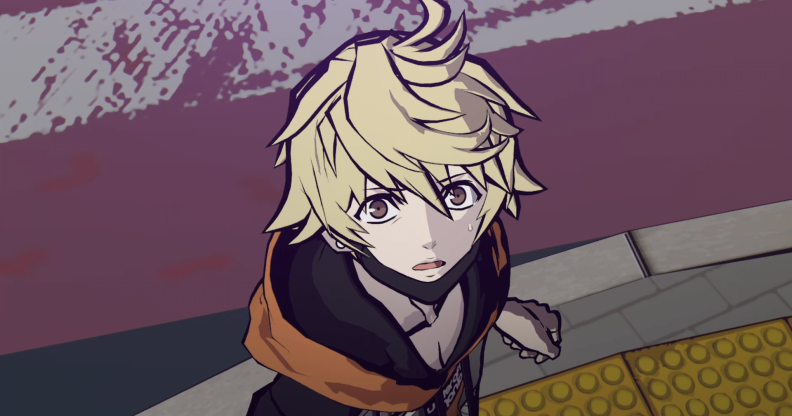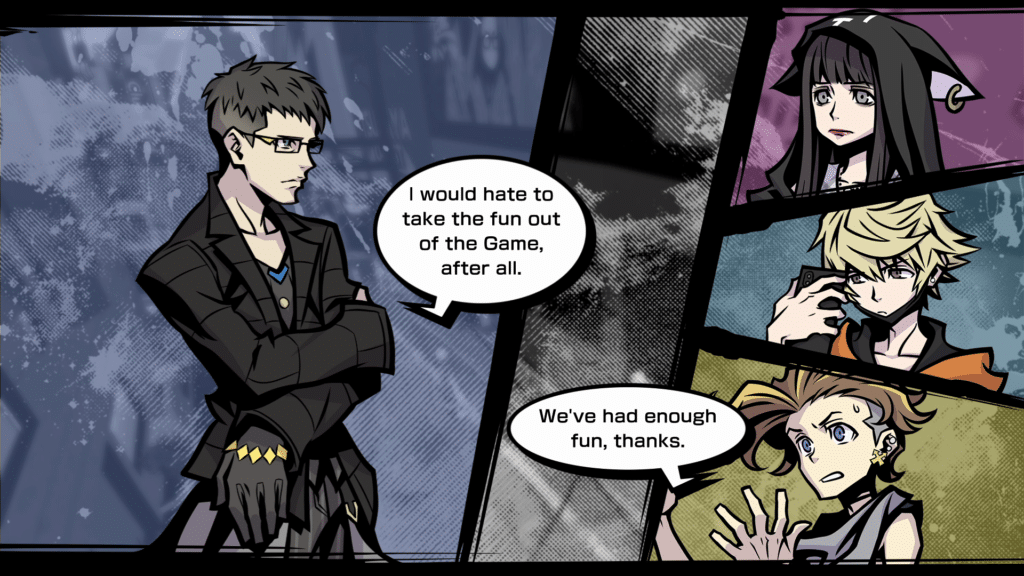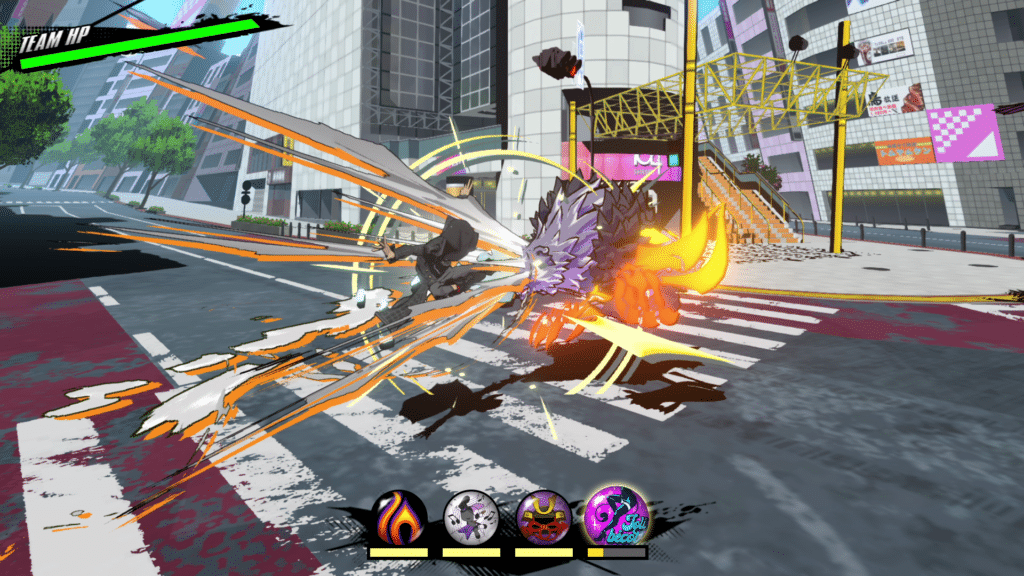Review: NEO The World Ends With You is packed with cool music, gay tropes and endless chatter

NEO: The World Ends With You. (Square Enix)
NEO: The World Ends With You. (Square Enix)
It’s fair to say the soundtrack to NEO: The World Ends With You absolutely slaps.
There’s metal, funk, electro, hip-hop and more in a psychedelic mix of styles that somehow sounds cohesive. For a game that’s all about cool, the music certainly does the heavy lifting. But is it all style over substance?
A sequel to the cult Nintendo DS game, the release of NEO: The World Ends With You on Switch was something of a welcome surprise to fans. While there are links to the previous game, it’s perfectly comprehensible on its own.
That’s because it follows a similar formula: a group of teens find themselves in an alternate dimension version of Tokyo’s Shibuya where they’re forced to compete against teams in the Reapers’ Game, a life or death battle for survival. But who is really behind the Reapers’ Game? What exactly is its purpose? And in this seeming afterlife, are these teens really dead?
Led by the likeable Rindo and his himbo pal Fret, the teens use their newfound psychic powers and their fashion sense to beat enemies and survive the week-long event. It’s full of teen subcultures, from fashion stars to pop idols, collectively creating an effortless and modern sense of cool.

NEO: The World Ends With You. (Square Enix)
Anyone who’s a fan of the Persona series will find much to enjoy here. Teens in a stylish Japanese metropolis; a mysterious phone app; altering the minds of others using psychic powers; developing relationships. It might be a little overly familiar, but NEO: The World Ends With You is just slick and stylish enough on its own.
Music is also important to the battle system: players must “mute” the enemy “noise”, and build up their “groove” meter to unleash special attacks. Later, you can even run faster by boosting to the beat.
Battles have a certain rhythm, though not of the musical kind. Fashion pins dropped by enemies are used to unleash attacks, but must be comboed correctly to build-up groove. It’s a little button mashy, but there is strategy in combining attacks and exploiting elemental weaknesses, as well as levelling and evolving pins. That said, targeting can be inaccurate and the camera struggles with the frantic action and deluge of effects.
And while there are hundreds of pins to collect, it’s all too easy to rely on a small number with combos practiced and repeated. Together with the repetitive enemy designs, combat ultimately feels shallow.
To initiate battles, areas must first be scanned meaning players can take combat at their own pace, as well as altering the difficulty for more or less item drops. Skipping combat does mean hitting some brick wall bosses later, requiring plenty of grinding.
Along with pins, there are fashion and food systems to increase stats, though innate abilities can only be used with the requisite ‘style’ level. Thankfully all clothes can be worn by any character no matter the gender, even if this doesn’t actually affect their appearance. It all adds up to a game firmly rooted in reality with smart fantasy twists, the small scale and lack of grandeur a refreshing take on the JRPG genre.

NEO: The World Ends With You. (Square Enix)
What’s also refreshing is its LGBT+ representation, even if it’s ultimately disappointing. Smaller side missions include a moment of cross-dressing and a boy mistaken for a girl – in the latter, players can advise him to utilise his difference for self-love or reject the haters. Either way there’s a positive outcome. Another character even seemingly references RuPaul with the line “this is your last chance to impress me and save yourselves…”
Queerest of all are the members of the Variabeauties – a rival team in the Reapers’ Game. Led by “kween” Kanon, the team shout lines in battle like “let’s go girls”, “work henny” and “I came to slay”, as well as referring to each other as “hunty”. Of course, this is typical drag lingo and it’s a welcome addition to a game developed in Japan.
Equally, though, these male characters are never specified as queer, nor are they given any characterisation beyond generic male team members. Is this relying on stereotypes for humour? Or in a game that thrives on pop culture, is gay culture just a natural part of the game?
The game falters in its structure. Throughout the city, missions consist of endlessly following other characters, defeating ‘x’ number of enemies, or collecting certain items. With the same mission types and the same urban backdrop, it soon becomes incredibly repetitive.
That includes time travel elements that, while cleverly impacting the narrative, force players to return to the same areas and read the same dialogue over and over. Where the visual design shines, the game design is tedious.
NEO: The World Ends With You is also a game that loves to chat…a lot. It might be typical of the genre, but it’s no less tiresome when every moment must be commented on by every character, even when it’s obvious to the player what’s happening. A little more editing and a little less hand holding would go a long way in easing players into the narrative.
With its stylish visuals and frenetic action, NEO: The World Ends With You is a slick and enjoyable experience for JRPG fans that’s let down by padding and characters that won’t shut up. No amount of cool music can quite make up for that.
3 / 5
NEO: The World Ends With You is available now on Nintendo Switch (reviewed) and PlayStation 4, with a PC version on the way soon via Epic.
For more gaming news, follow Gaymeo on Facebook and Twitter. You can also email us with any news or tips on [email protected]

